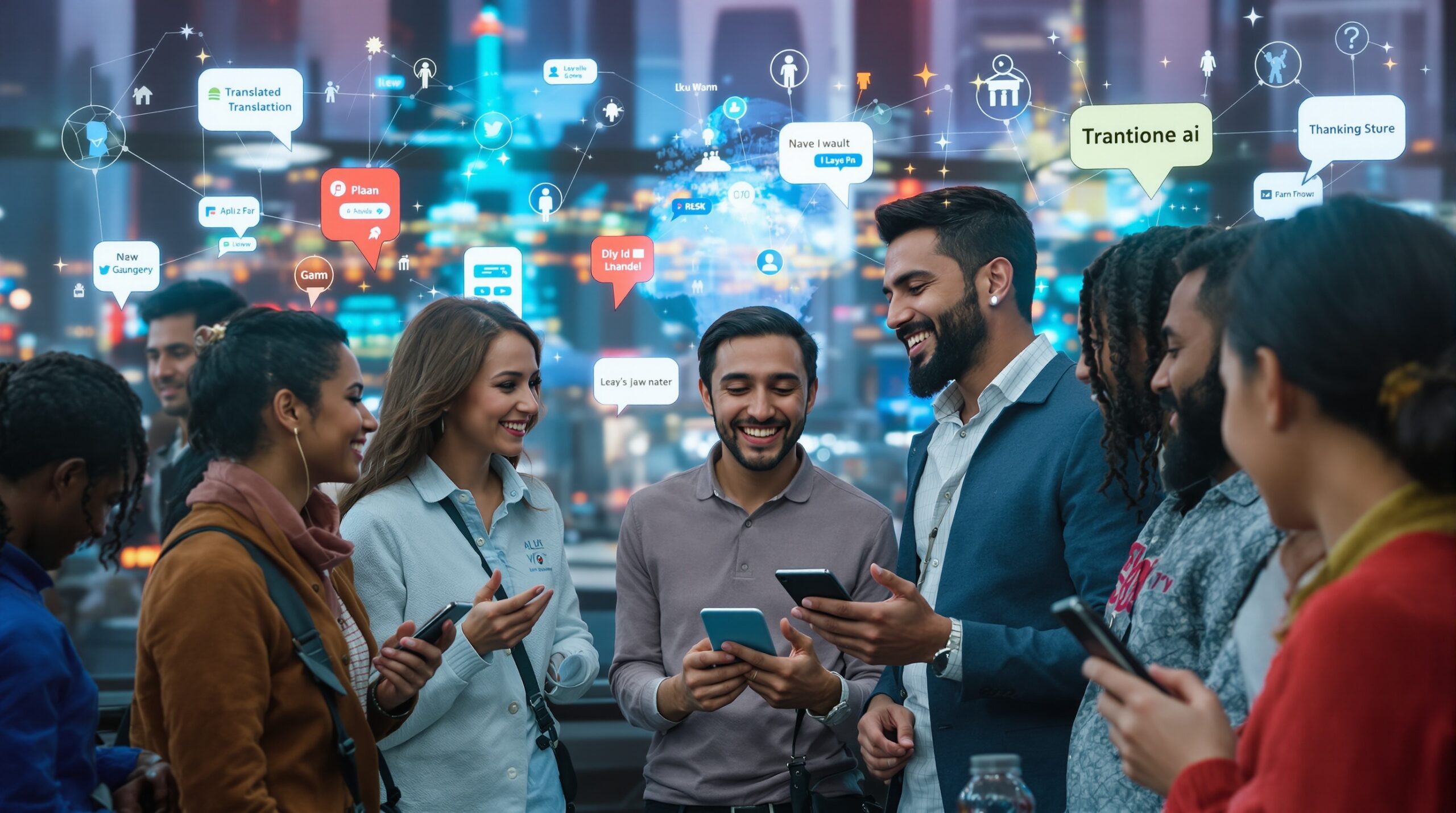Artificial intelligence is quickly transforming the landscape of global communication. Language barriers, once a formidable challenge, are giving way to advanced machine translation systems. These innovations enable people, businesses, and governments to interact across languages with confidence and speed. The result is an era where clear, accurate communication is possible almost instantly.
The Rapid Evolution of AI Language Translation
Technological advancements in natural language processing (NLP) drive the current success of AI-driven translators. Early translation programs relied on rigid grammar rules and basic dictionaries. Today’s solutions use deep learning and large-scale datasets to understand words and context far better than before. Neural machine translation models, especially those based on transformer architecture, power leading platforms like Google Translate and DeepL.
Breakthroughs in machine learning allow AI systems to analyze millions of sentence pairs across languages. Computers learn phrasing, idioms, and even subtle tonal shifts in language use. This consistent evolution sets higher standards for accuracy, context, and natural flow in translated communication.
Breaking Down Complex Language Barriers
AI eliminates hidden complications in communication that result from language diversity. Nuances such as slang, cultural references, and regional idioms are no longer insurmountable obstacles. Modern translation engines can process and adapt to slang or technical jargon in real time. This adaptability ensures people express themselves authentically, without exhausting manual translation or risking misunderstandings.
Moreover, AI-driven translation allows for clearer, cross-cultural engagement in international forums, academic publishing, and global news reporting. The technology also helps minority language speakers access information, education, and business opportunities previously restricted by language barriers.
The Role of AI in International Business and Collaboration
As companies expand globally, efficient communication with multinational colleagues, partners, and customers becomes essential. AI-powered language tools are vital for drafting contracts, marketing materials, and technical documents that resonate across languages and cultures. This improves operational efficiency and reduces errors that can arise from incorrect manual translation.
Real-time translation integrates into remote meeting platforms, chat systems, and helpdesks. Staff members can interact with clients or partners from different countries without language confusion. This ease of collaboration increases productivity and competitiveness in world markets. Multilingual customer support, automated chatbots, and translation plug-ins drive strong engagement by respecting each audience’s primary language.
Transforming Travel, Healthcare, and Education
AI is also changing industry-specific standards for communication, particularly in travel, healthcare, and education. Tourists navigate foreign cities using instant translation apps for menus, guides, and interactions with locals. Hospitals and clinics deploy AI interpreters to help medical staff and patients communicate precisely about symptoms, treatments, and consent.
In classrooms, AI translation allows teachers to reach diverse students more effectively. Learning resources can be swiftly converted into multiple languages, making high-quality materials available globally. These transformations promote a more connected and inclusive world, regardless of language differences.
Accuracy, Security, and Ethical Considerations
High translation accuracy is critical, especially in legal, financial, or healthcare contexts. AI’s constant learning capability means performance improves as it processes more content. Teams of human reviewers work alongside AI to further enhance output, flag errors, and ensure cultural appropriateness. This human-machine partnership ensures nuanced communication and helps adapt translations to context-specific needs.
As AI translation becomes more integrated, questions about data privacy and confidentiality emerge. Developers employ encryption and privacy-preserving techniques to shield sensitive information during processing. Ethics also demand that AI translations respect all cultures and identities, avoiding bias or unintended stereotypes. Active engagement with linguists, ethicists, and communities guides responsible innovation in this field.
AI Language Translation’s Technical Backbone
Most modern AI translation systems rely on transformer-based neural networks. These networks are trained on vast troves of multilingual data, including governmental records, international news, and web documents. The architecture processes entire sentences at once, modeling relationships between words globally and locally.
Transfer learning and pre-trained language models, such as BERT, GPT, and T5, significantly boost translation quality. Such advances make it possible to support rare or low-resource languages, expanding access and inclusion. Automated evaluation metrics measure output for grammatical correctness and naturalness, enabling ongoing refinement. Researchers continue to experiment with reinforcement learning and hybrid systems, constantly raising the bar for translation excellence.
The Social Impact of AI-Driven Communication
AI translation helps global communities connect, share stories, and collaborate on challenges such as climate change and public health. By bridging language gaps, the technology promotes economic development and educational access. Minority languages benefit from preservation efforts as AI tools make learning resources and literature more widely available.
AI translation also supports humanitarian work. Aid organizations can rapidly deploy translated guidelines and emergency information during crisis responses. Communities in disaster zones or conflict regions receive life-saving updates in their native tongue, enhancing trust and effective action.
Challenges and the Road Ahead
Despite impressive advances, AI-driven translation is not without limitations. Figurative language, humor, or creative writing still pose hurdles for automated systems. Researchers strive to improve AI’s understanding of tone, irony, and context beyond literal word meaning. Regular updates and feedback loops involving native speakers further polish translations and address issues.
Ongoing investment in AI ethics, transparency, and accessibility remains important. Its future success depends on equitable technology access and cultural sensitivity. Developers also work to include lesser-spoken tongues, ensuring no community is left out.
Setting Communication Standards for Tomorrow
AI-driven language translation technology is rewriting the rules for global communication. Its impact is evident across businesses, education, healthcare, and humanitarian efforts. With continuous improvements and ethical development, AI translators will set a gold standard for inclusivity and real-time understanding.
Tomorrow’s communication landscape prioritizes clarity, diversity, and accessibility. AI-powered tools are pivotal in bringing people closer together, regardless of language or location. Embracing these innovations marks a significant step toward a more connected and collaborative world.


